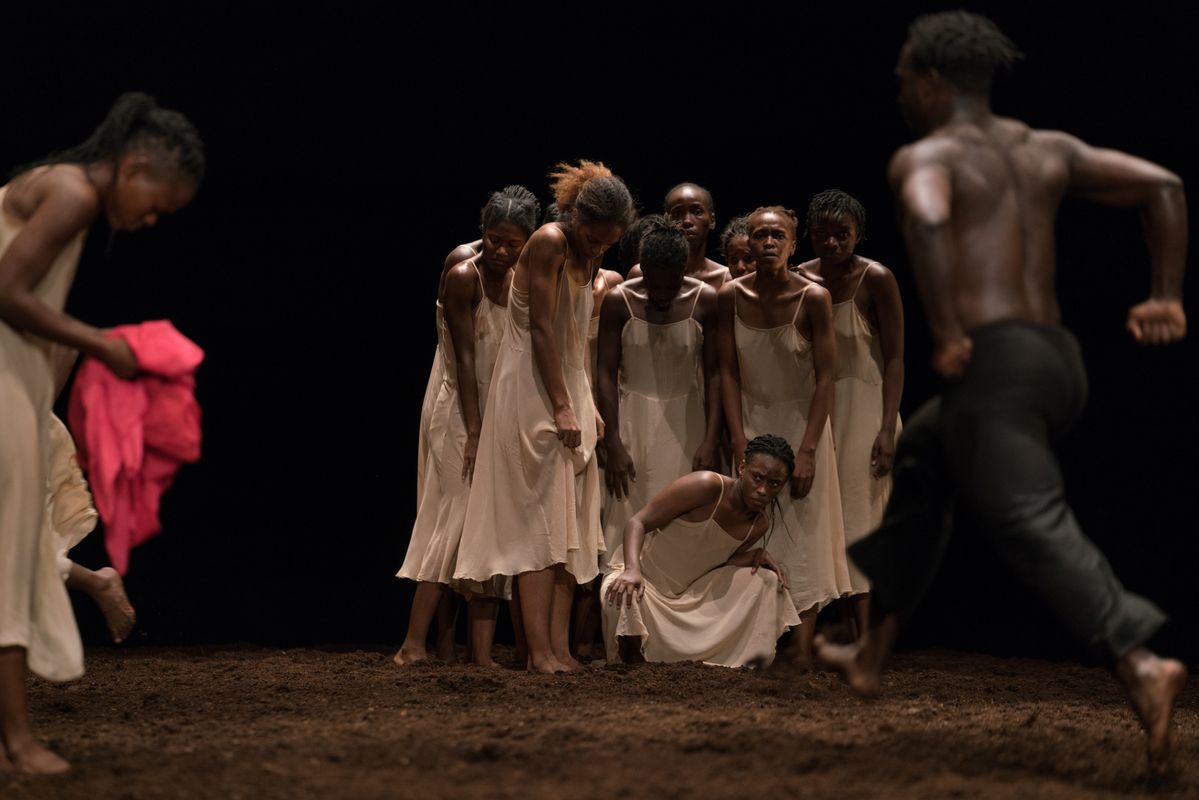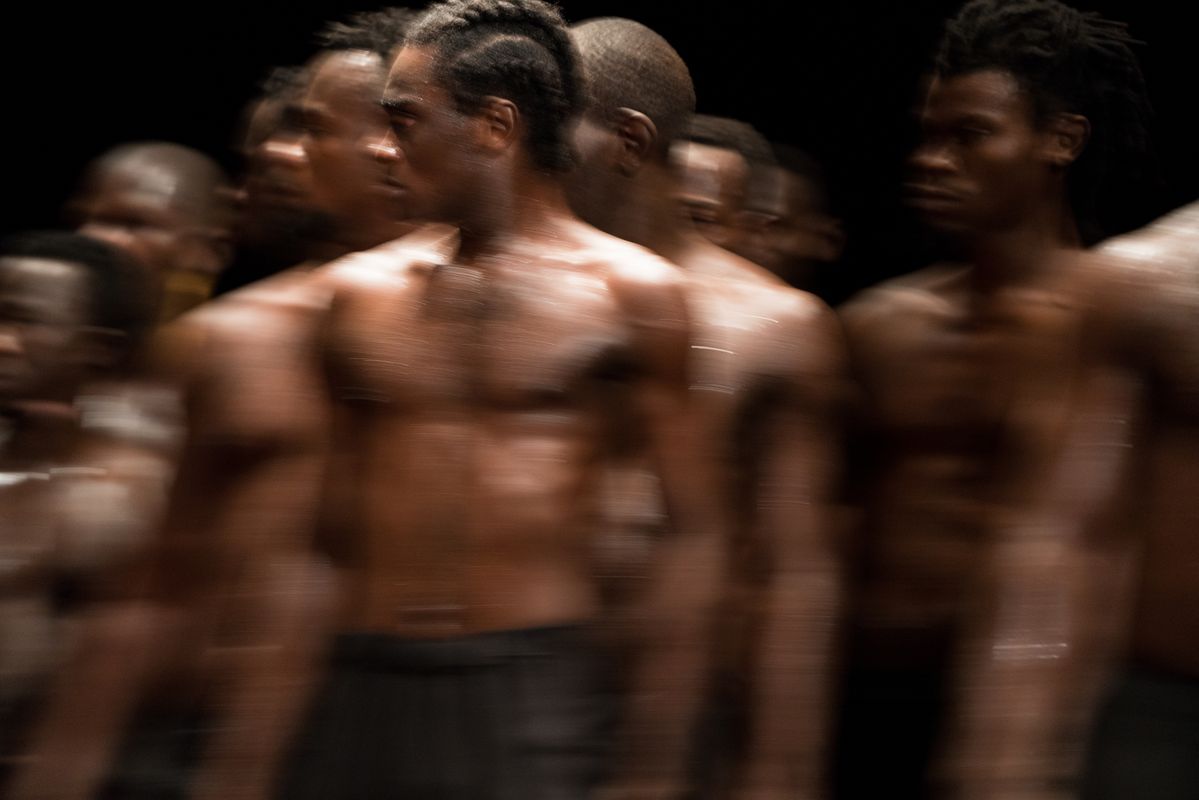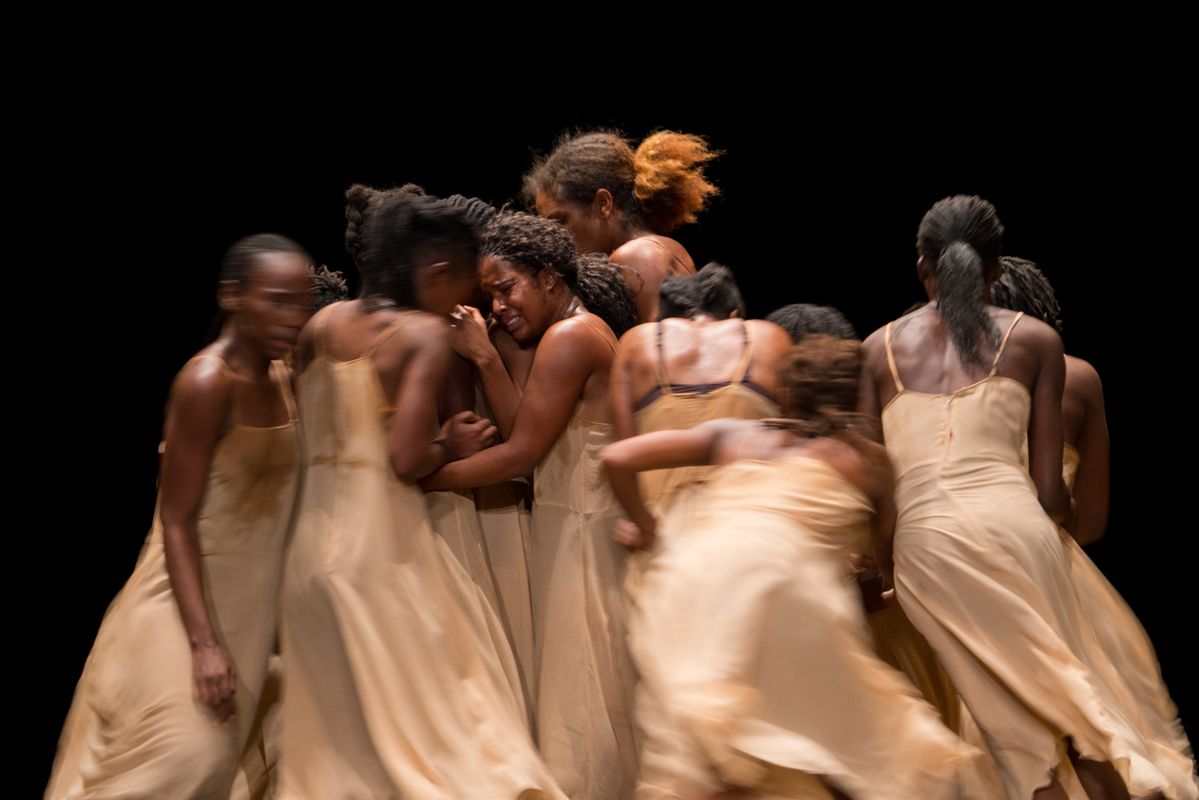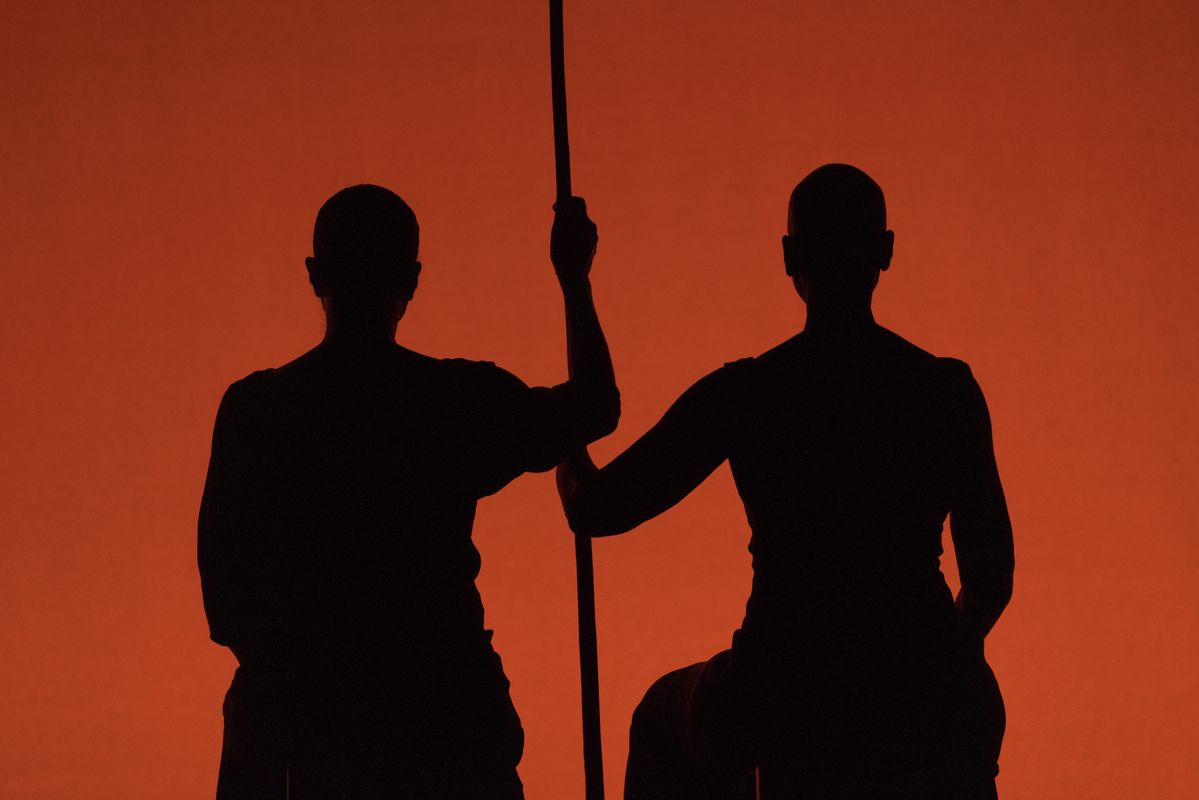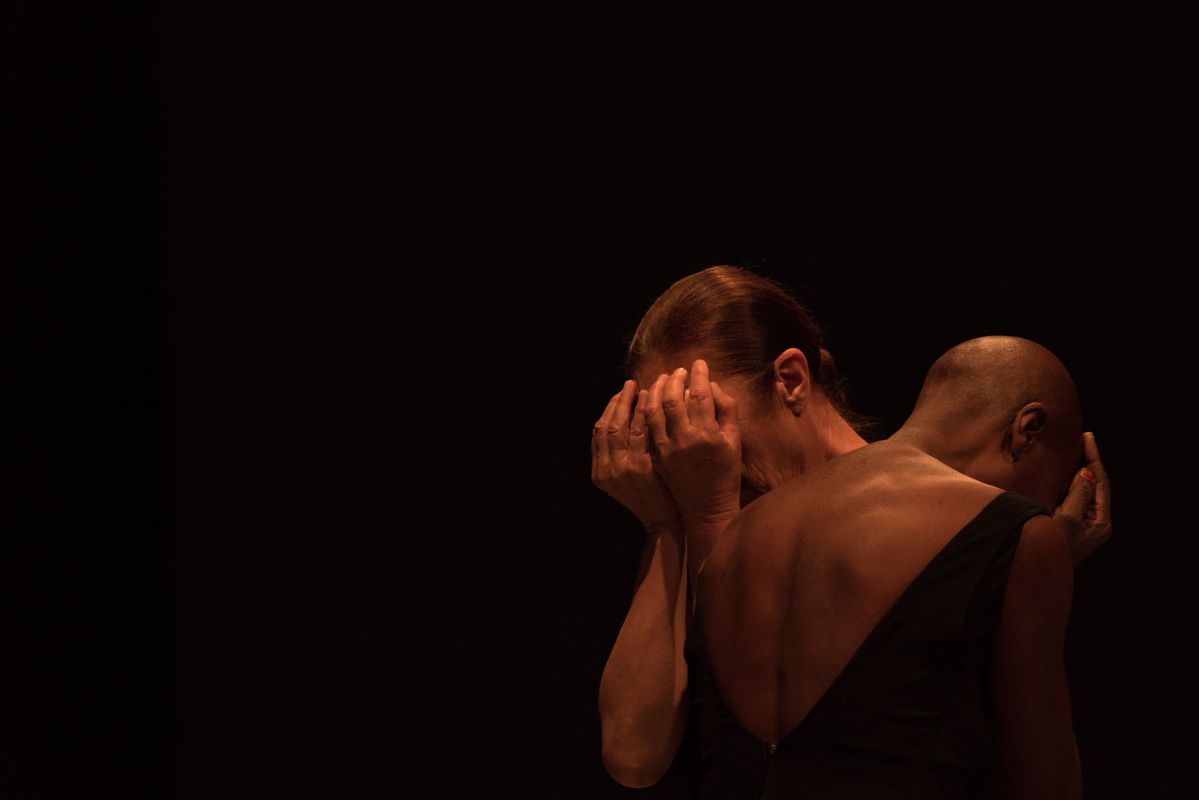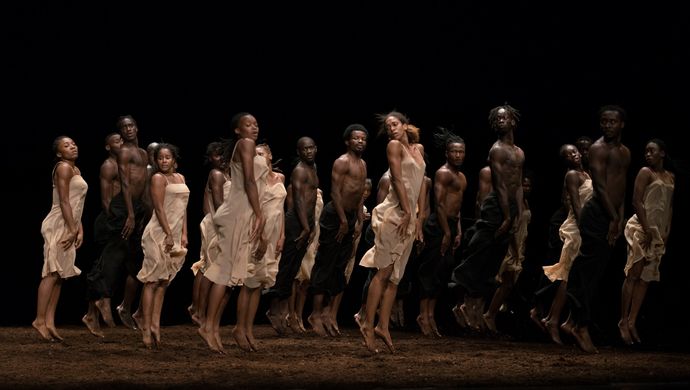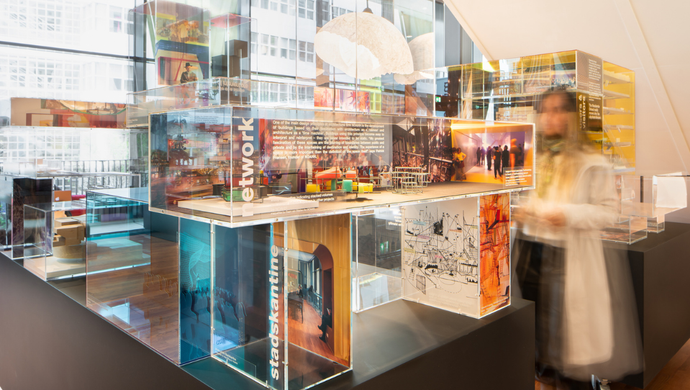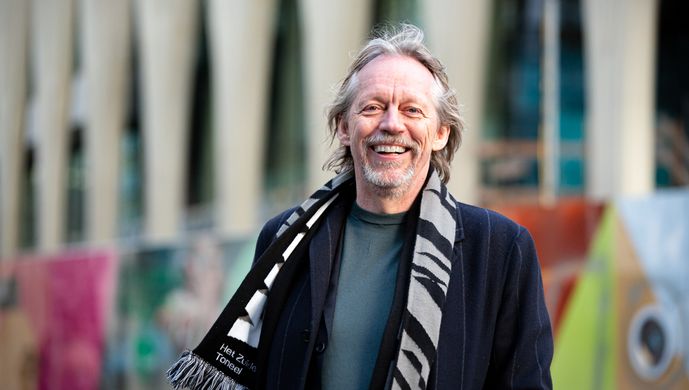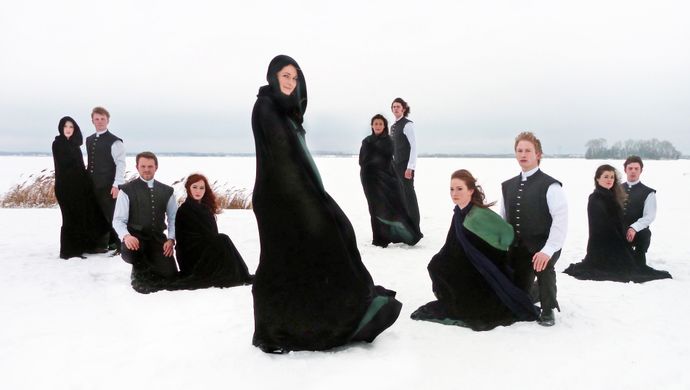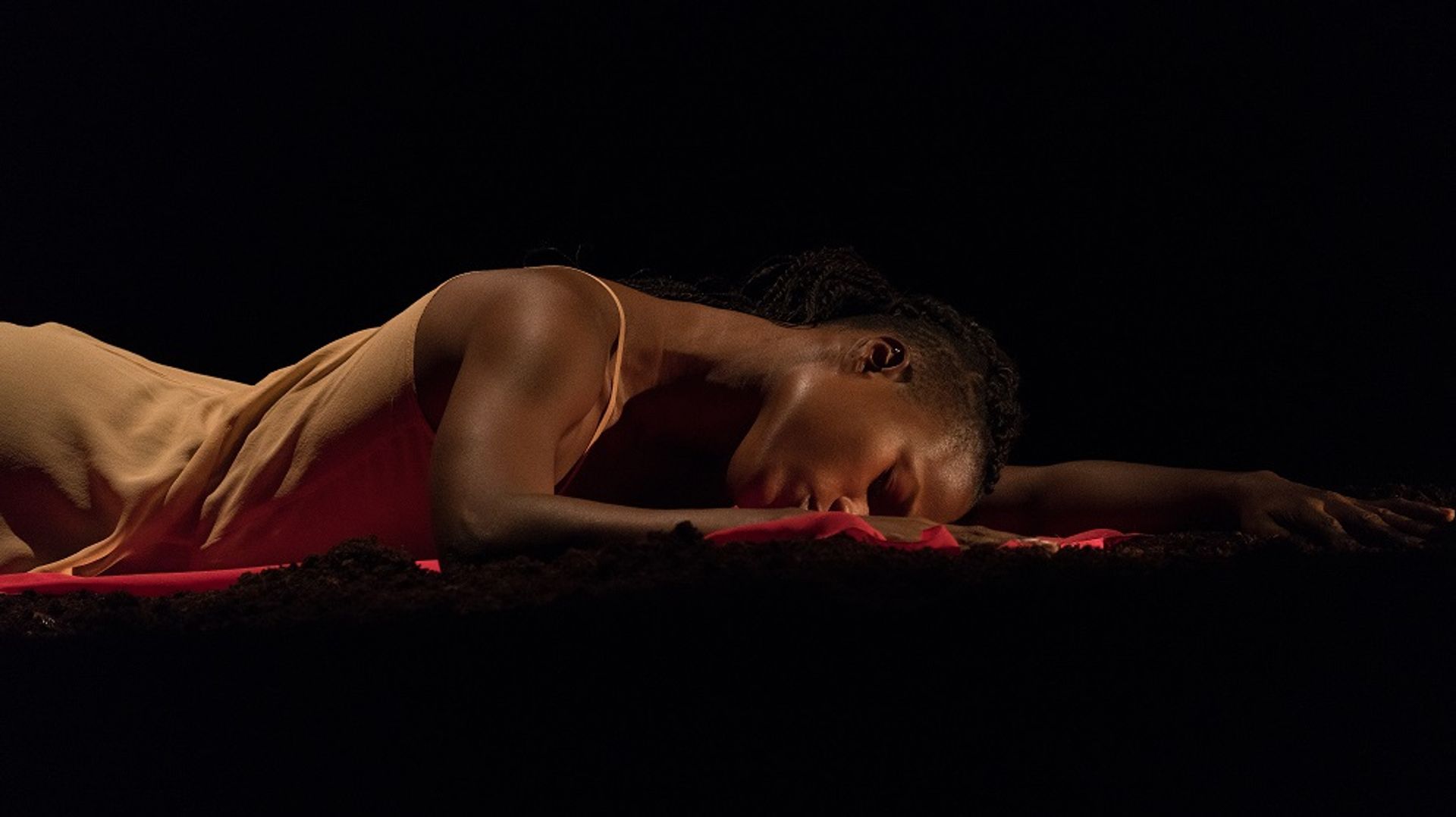
A perfect symbiosis: Bausch & Acogny
21 December 2022, article, text: Jacq. Algra (the original Dutch article was previously published in Dansmagazine 06-2022)
Pina Bausch’s raw version of The Rite of Spring, in which men choose a woman who must literally dance herself to death to ensure a fertile spring season, turned quite a few heads in 1975. The Tanztheater classic is now brought to life once more by African dancers. “This piece offers room for a wide range of human characteristics and emotions, and we look for those in every performer.”
“Normally, when rehearsing works by Pina Bausch, we work with the dancers available within an ensemble. That is always a challenge, of course, it implies a compromise,” says Jorge Puerta Armenta, who is artistically in charge of this rendition of The Rite of Spring along with Clémentine Deluy and Josephine Ann Endicott.
“When you hold an open audition, you get a lot of people who are enormously motivated and interested in that specific project. It’s a great way to put together the ideal cast. Of course, building up a group from scratch is much more complicated from a production and logistical point of view, but it also means bringing people together for a specific purpose. That creates a completely different atmosphere. The path that Pina Bausch Foundation, École des Sables and Sadler's Wells Theatre have chosen gives us the opportunity to be completely fresh and shiny.”
An entire cosmos
Endicott, Deluy and Armenta danced at Tanztheater Wuppertal for many years, under Bausch herself, who passed away in 2009 at the age of sixty-eight. Her legacy: more than forty sensational productions and thousands of video tapes, photos, flyers and posters. “There is an entire cosmos to discover,” says her son Salomon Bausch, who manages the online archive and the activities of the foundation in collaboration with Ismaël Dia and Darmstadt University of Applied Sciences.
École des Sables, led by Germaine Acogny, is one of the foundation’s partners. Dance artists who are selected for the fellowship programme join her in Toubab Dialaw, Senegal, where they have the opportunity to study her dance technique, which has its roots in both traditional African dance and Western classic and modern dance. Two elements are of central importance: the spine, referred to as the Serpent of Life, and the dancer’s environment, because dancers always enter into a dialogue with the cosmos and nature.
Connectedness
Acogny learned her first dance moves from her mother, a Yoruba priestess, and later studied in Paris and New York. She managed Mudra Afrique in Dakar (the African counterpart of Maurice Béjart’s dance school in Brussels), founded the Studio-École-Ballet-Théâtre du 3ème Monde in Toulouse, then returned to Senegal in 1995 for her School of the Sands. Shortly after, she founded her own company, Jant-Bi, with which she performed several times in the Netherlands.
When Acogny first witnessed Bausch’s Frühlingsopfer, in which the dancers’ bare feet drag trails through a layer of earth, she saw an African ritual, and was deeply touched. Eight years ago, she danced a solo performance tailor-made for her by choreographer Olivier Dubois, set to Stravinsky’s music: Mon élue noir - My black chosen one. It was crowned with a Bessie Award in New York.
All of this forms a perfect prelude to common ground[s], a duet about diversity and connection that Acogny performs as an introduction to The Rite of Spring, together with Malou Airaudo. This French performer danced with the Ballet Russe de Monte Carlo and in New York before settling in Wuppertal as soon as Bausch began her quest there. Airaudo has since passed the age of seventy, as has Acogny.
In the words of Josephine Ann Endicott, a dancer from the original cast:
“This is one of the most amazing works to dance, it’s unforgettable. You feel every bone in your body, feel the entire group around you. You’re all sweating, all feeling the same fear.”
What Pina Bausch wanted
“Not how people move, but what moves them.” That was the philosophy of Philippine Bausch (1940-2009). As a choreographer, she sought to express inner movement in her dance, focusing not just on dance technique, but searching for “a language for life itself”.
Challenges
Together with Salomon Bausch and Acogny, Amarenta devised a plan to find the right African dancers for this edition of The Rite of Spring.
Amarenta: “Straight away, it was clear that holding auditions only in Senegal would not be enough, because for most dancers it was not easy to travel all the way there. So Acogny contacted the artistic managers of various dance centres in Burkina Faso and Côte d'Ivoire. We started the auditions with more than two hundred dancers. Did we expect that many? To be honest, we had no idea what to expect. How many dancers, which nationalities, which backgrounds… Africa is a huge place.”
Ultimately, the team – the three artistic leaders and three coaches – hit the studios with thirty-six dancers from fourteen different countries. It was the first time that the majority of the participating dancers were not classically trained; however diverse it was in other ways, the members of the Wuppertal ensemble always predominantly came from classical backgrounds. The same is true of all other companies that have so far rehearsed Bausch choreographies. The Rite of Spring was the first work to be performed by a differently schooled ensemble, the Parisian Opera Ballet.
Did this make the rehearsal process all the more difficult? “Not at all,” says Deluy. “Every background has its advantages. The challenges in this group may be of a different kind, but there are always challenges, whether the dancers are classically trained or otherwise. What is a real challenge is the piece itself. It is incomparable with, say, Iphigenie auf Taurus, which I rehearsed at the Semperoper Ballett. That is why I have focused on the choreography itself, and the pure movements themselves.”
It came as no small shock when, under Bausch’s leadership, the Wuppertal Opera Ballett changed its name to Tanztheater Wuppertal in 1973, replacing the customary fairies and Balanchine ballerinas with flesh-and-blood dancers who shared their own experiences with the audience. Recurring themes were the gap and the miscommunications between men and women that thwart the desire for love and wound the heart.
Frühlingsopfer was Bausch's sixth creation, and the last to have a narrative; her later works were increasingly collage-esque in structure. Stravinsky’s music provided the score for a choreography centring around men’s ruthless, intimidating treatment of women and women’s fear of falling victim to men. Bausch’s dancers presented the theme in a raw, radical and emotional way, allowing the audience share in their feelings and perhaps be moved to reflection. This was called Theater der Erfahrung (the Theater of Experience).
“There are, of course, situations where there is nothing left to say, where you are truly lost for words. All you can do then is indicate things, create suggestions. I think that is the point where dance begins.” These words from the world-famous choreographer reverberate in Wim Wenders’ film Pina. Her philosophy proved to be entirely on the money: Bausch’s language of dance is understood and admired around the world.
Being in the moment
Deluy: “Talking about the emotions contained in dance: every dancer has to experience them for themselves. When you become one with the choreography, there is no need to act, to pretend. Those who perform the movements with intensity will soon grasp the intent behind them. Bausch’s corporeal sculptures embody fear, desire, and so on. When the dancers open themselves up to it and truly lose themselves in the moment, they attain the right frame of mind, and by repeatedly performing each movement, they discover what how it affects their bodies. The movement is what lets them turn their attention inwards.”
Armenta says the dancers frequently asked what the meaning of specific movements were. “In answer, I explained that the movements were originally derived from the personal input of the dancers. It is rooted in the thoughts and feelings of the original cast, their answers to specific questions that Bausch posed. Modern dancers move with emotion, emotion that arises in the movement and that they communicate outwards. So I primarily focus on the development – how movements begin and intensify. And that is of course linked to the music, which Bausch had a very sharp ear for. In The Rite of Spring, dance and music form a perfect symbiosis.’
In the words of the dancers
Gloria Ugwarelojo Biachi is a Nigerian dancer, choreographer, costume designer and fitness instructor. She trained at the Dance Deal Foundation in Lagos under Bimbo Obafunwa.
“Before I auditioned, I never really understood what this piece by Bausch was about. I just wanted to compete for a spot to see what I could do, find out where I stood. During the rehearsals, I completely opened my mind to the choreography and fully went along with every instruction we were given. What I find most difficult is to make the piece my own, to truly understand it so that I can clearly communicate Bausch’s message to the audience. For me, that message focuses on the question: can we find connection, solidarity and understanding, a fertile relationship with our time and the world around us? During the rehearsals, I was often told: stop acting! You have to find it within yourself.”
Serge Arthur Dodo is a dancer and choreographer from Côte d'Ivoire. He won various televised dance competitions before studying at École National du Théâtre et Danse and École des Sables. He heads the ensemble King'Art and teaches in various cities, including Amsterdam.
“When you have seen the video and the coaches have demonstrated the movements, you want to perform them in the same way. But to me, this project is also about being yourself. About being able to accept what they give you and make it your own.”
Discover Pina Bausch at Amare
What's On
-
-
Sun 8 Jan ’2316:00Filmhuis Den Haag
-
Sun 15 Jan ’2312:00Filmhuis Den Haag
-
Mon 16 Jan ’2315:30Filmhuis Den Haag
-
Mon 16 Jan ’2316:45Filmhuis Den Haag
-
Tue 17 Jan ’2316:45Filmhuis Den Haag
-
Wed 18 Jan ’2316:45Filmhuis Den Haag
-
Fri 20 Jan ’2310:30Filmhuis Den Haag
-
Sat 21 Jan ’2315:30Filmhuis Den Haag
-
Wed 25 Jan ’2318:45Filmhuis Den Haag
-
-
-
Thu 12 Jan ’2320:30 - 22:00Danstheater
-
Fri 13 Jan ’2320:30 - 22:00Danstheater
-
Sat 14 Jan ’2320:30 - 22:00Danstheater
-
Sun 15 Jan ’2314:00 - 15:30Danstheater
-




